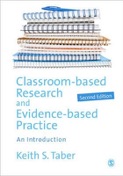Educational Research Methods

A site to support teaching and learning...

‘Pure’ observation
Observers may take different roles in research. The pure observer seeks to observe an activity without influencing it. However, in practice awareness of the presence of an observer is likely to influence people’s behaviour.
Observers can attempt to minimise their influence by careful choice of position (as unobtrusive as possible) and by carefully choosing suitable dress. For example, if observing in a school class, the observer might wear fairly drab colour, and dress smartly (suitably for a place of learning) without being ‘over-dressed’ (e.g. looking like a visiting official).
“The difficulty of "fitting into" a bar they had never previously visited and of discreetly observing smoking was probably the main concern for the researchers who collected these data. The ability to "blend in" depended on both the type of bar and the time of day. Matching the observer by age and gender to the bar was important in some circumstances, so that they looked like a "typical customer"...
Inadvertent violations of bar norms were also possible; a researcher could accidentally sit in a seat belonging to a regular customer. However, the most obvious measure the researchers could take to "fit in" was to have a drink in the bar. Sometimes a soft drink was possible; but in some bars at some times this, too, could attract attention. In one venue putting money in the jukebox was also found to constitute unusual behaviour.” (Petticrew, et al., 2007: 5).
Petticrew, M., Semple, S., Hilton, S., Creely, K. S., Eadie, D., Ritchie, D., . . . Hurley, F. (2007). Covert observation in practice: lessons from the evaluation of the prohibition of smoking in public places in Scotland. BMC Public Health, 7(1), 1-8. doi: 10.1186/1471-2458-7-204
Sometimes it is possible to observe without being seen at all. For example, it might be possible to use one-way glass, or observe through unobtrusive cameras and microphones. This could become covert observation where the observed are not aware that observation is taking place. In some kinds of research - in public places where subjects are taken as standing for random members of the population and are not identified or identifiable, this might be acceptable.
Usually in education research, observation is only ethical with the informed consent of those bring observed, and observation without permission would be unethical. However, if a group had given permission for observation, but knew it would happen intermittently using unobtrusive recording equipment, it may well be that conditions for observation approach pure observation.
This is a personal site of Keith S. Taber to support teaching of educational research methods.
(Dr Keith Taber is Professor of Science Education at the University of Cambridge.)
2015
